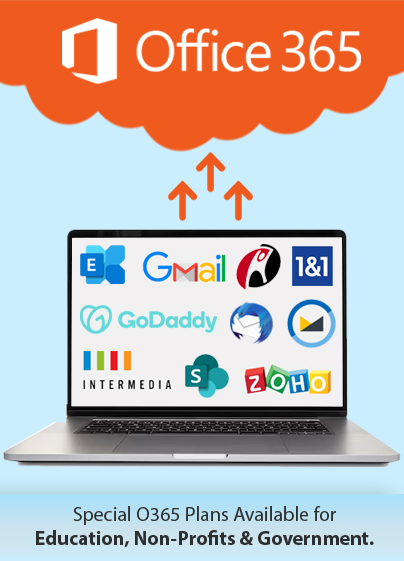Single vs Multiple Tenant Migration for Microsoft Office 365: Key Tips & Strategies
The tenant-to-tenant migration process involves the seamless transfer of data and resources between different tenants within a cloud environment, often necessitated by organizational restructuring or mergers. This complex undertaking requires meticulous planning, thorough assessment of existing infrastructure, and implementation of robust security measures to safeguard sensitive data. Leveraging tools and resources provided by cloud service providers can streamline the process and ensure a smooth tenant-to-tenant migration process. Effective communication and collaboration with stakeholders across departments are essential to mitigate potential disruptions and ensure alignment with organizational goals. By following a systematic approach and adhering to best practices, businesses can navigate the intricacies of Office 365 tenant-to-tenant migration successfully, optimizing resource utilization and driving business growth.
Single or Multiple Tenant Migration: Understanding the Basics
Before delving into recommendations, let’s clarify the concepts of single and multiple-tenant migration. In single-tenant migration, all organizational data and resources are transferred from one environment to another within the same tenant. Conversely, multiple-tenant migration involves the transfer of data and resources between different tenants, often necessitated by mergers, acquisitions, or organizational restructuring.
-
Single Tenant Migration Recommendations
For organizations with relatively straightforward infrastructure and minimal complexities, single-tenant migration presents several advantages. Firstly, it simplifies the migration process, as data transfer occurs within a unified environment, minimizing the risk of data loss or disruption. Moreover, single-tenant migration typically requires fewer resources and incurs lower costs compared to its multiple-tenant counterpart.
To optimize the single-tenant migration process, it’s essential to conduct a comprehensive assessment of existing infrastructure, identifying potential bottlenecks or compatibility issues. Additionally, engaging with experienced Office 365 migration specialists like Apps4Rent can provide valuable insights and mitigate potential risks, ensuring a smooth migration journey.
-
Multiple Tenant Migration Recommendations
In contrast, multiple tenant migration poses unique challenges, particularly in scenarios involving disparate infrastructure, data governance policies, and security protocols. However, it also offers significant benefits in terms of flexibility, scalability, and alignment with organizational goals. By consolidating resources across multiple tenants, businesses can optimize resource utilization, enhance collaboration, and achieve economies of scale.
To navigate the complexities of multiple tenant migration successfully organizations must adopt a systematic approach, beginning with a thorough assessment of existing infrastructure and data dependencies. Establishing clear communication channels and collaboration frameworks with stakeholders across departments is paramount to ensure alignment and mitigate potential disruptions.
Leveraging automation tools and migration frameworks tailored to multiple tenant environments can accelerate the migration process while minimizing manual intervention and human error. Additionally, implementing robust security measures and compliance protocols is essential to safeguard sensitive data and mitigate the risk of data breaches during the migration process.
Microsoft Tenant-to-Tenant Migration: A Strategic Approach
As businesses increasingly rely on Microsoft’s suite of cloud services, including Office 365 and Azure, the need for seamless tenant-to-tenant migration solutions becomes more pronounced. Apps4Rent offers a range of tools and resources designed to facilitate smooth migration, including the SharePoint Migration Tool and third-party migration solutions integrated with Microsoft 365.
When embarking on a Microsoft tenant-to-tenant migration organizations should prioritize data integrity, minimizing disruption to business operations and ensuring continuity. Conducting thorough pre-migration planning and testing is crucial to identify potential pitfalls and mitigate risks proactively. Moreover, leveraging Apps4Rent’s expertise and support services can provide invaluable guidance throughout the migration journey, from planning and execution to post-migration optimization.
Tailoring the Migration Process to Your Needs
Ultimately, the decision between single and multiple tenant migration hinges on a variety of factors, including organizational structure, scalability requirements, and long-term strategic objectives. By carefully assessing your unique needs and challenges, you can tailor the migration process to align with your business goals and maximize ROI.
Conclusion
The choice between single and multiple-tenant migration isn’t a binary decision but rather a strategic one that requires careful consideration of various factors. By following the recommendations outlined above and leveraging the right resources, organizations can embark on a migration journey that meets their specific needs and sets the stage for future success in the cloud.
As a Microsoft Solutions Partner, Apps4Rent can help with all kinds of tenant-to-tenant migrations. Our expert team is available 24/7/365 through phone, chat, and email.
Apps4Rent – Tier 1 Office 365 Cloud Solution Provider
